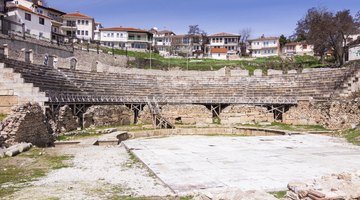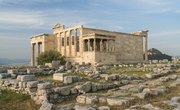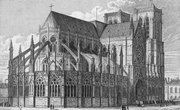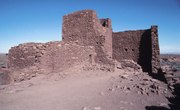Often considered the cradle of the western world, ancient Greece’s architecture continues to be a point of influence in building design in modern cities. A few basic elements of Greek architecture have made a big impact on modern architecture. Roman architecture has made an impact on Neoclassical, Federal, Georgian Revival and Beaux-Arts style. The use of concrete and the infrastructure concept that allowed the Roman Empire to expand so efficiently made the architecture a long-lasting symbol of a once powerful people.
Basic Background
Columns, friezes, pediments and proportional design are the main features of Greek architecture. They give this ancient style its distinguishing character. There are three orders of Greek architecture typically recognized by scholars: Doric, Ionic and Corinthian. The plain column with no base and an understated capital is known as Doric. The Parthenon is a prime example of the Doric order as is the Lincoln Memorial in Washington, D.C. The Ionic column has a base and a more elaborate scrolled capital. It also may include a solid frieze that's either left plain or has some sculpture. The more lavish Corinthian order is known for its slender column with a rather intricate capital that can be strewn with stylized acanthus leaves. The frieze is ornately sculpted and decorative moldings are found throughout the design.
Terms to Know
There are many words we use today that had their origins in Greek architecture. Cornice refers to the place just below the pediment, which is a triangular section that lies just above the frieze. A pediment is often filled with relief sculpture. A triglyph is a carved panel, usually referred to as the Doric frieze that gives the suggestion of the base of a beam. A relief is a method of sculpting that has the subjects, figures or adornments emerging from the stone and is completely attached.
Main Influence
The colonnade continues to be a popular modern architectural style. The row of columns supports an entablature, which encompasses the architrave, frieze and cornice. The columns usually are the base to hold up a roof. It's one of the main features that immediately herald to ancient Greek architecture. The Oslo Trading Building in Norway, the columned porches of plantations in the South and the Ionic order columns that flank the Chamber of Commerce in Dougherty County, Georgia, are a few examples of how Greek architecture finds its way into modern buildings meant to impress an idea of democracy, power and respect.
Related Articles
References
Writer Bio
Kimberley McGee is an award-winning journalist with 20+ years of experience writing about education, jobs, business and more for The New York Times, Las Vegas Review-Journal, Today’s Parent and other publications. She graduated with a B.A. in Journalism from UNLV. Her full bio and clips can be seen at www.vegaswriter.com.











